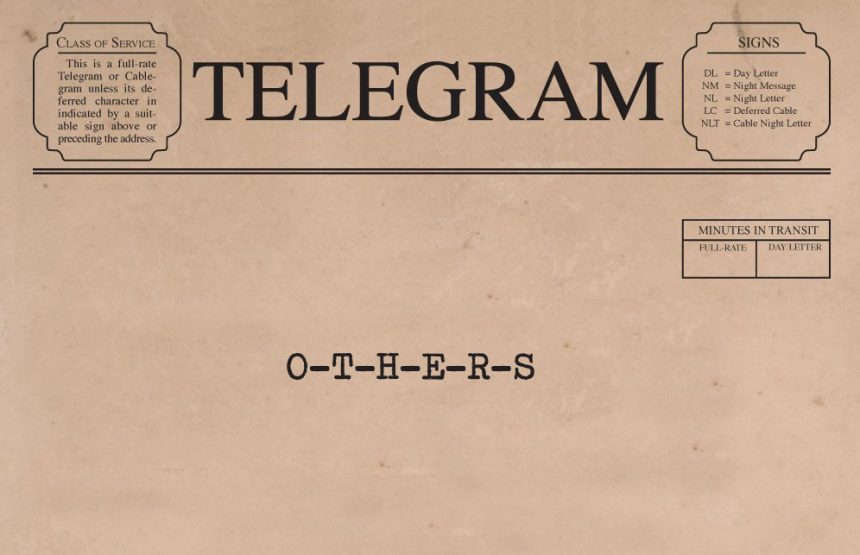Introduction
William Booth, the founder of The Salvation Army, was preparing to send his annual Christmas message to Salvationists around the world. In those early days, communication was by telegraph, and each word you sent was costly. As money was short, Booth decided to send a one–word telegram. It read simply “OTHERS.”
Reaching out to others is still a challenge in our world today. General William Booth challenged his officers with that one word, “OTHERS.” Today we have a challenge to continue serving others through The Salvation Army—through our corps and our women’s ministries group.
Ask the women to choose one or two areas of service, which they could do in the next two weeks by themselves or teaming up with one or two other women. Ask them to take time to prayerfully prepare for their chosen area of service and then do it! The goal is to serve those outside the corps family who are in need of our care. They might send notes to encourage the recipients using Bible verses, songs or poems.
Program Preparation
- Discuss with the group to predetermine the area of service they would like to cover.
- Decide who will collect the supplies needed to perform the service.
- Assign someone to make contact with potential recipients so that they know you are coming.
Suggested Areas of Service
Traditional Service Areas:
- Community of Care—Christmas and Easter ministry to shut-ins and care facilities with a small gift and a War Cry. Share photos of previous Community of Care distributions with the women.
- Emergency Disaster Services (EDS)—personal hygiene kits, blankets and mosquito spray for the homeless. Invite an EDS staff member to come and share stories of helping during a disaster.
- Food Pantry Collections—non-perishable food and paper products. Invite the social service staff to share how the programs work and how the food pantry serves the community.
Outreach Service Area
- “Welcome to the neighborhood” bags—prepare a gift bag with note cards, small gifts or baked goods to share with new neighbors. Be sure to include information about Sunday services and women’s ministries.
- E-learning—this may be a new area of service provided to students who come to the corps building as a place of learning. Provide snacks and volunteer support for the teachers as well as the students by volunteering time. Check with the leader of E-learning to see what supplies are needed.
- Senior Services—reach out to those seniors confined to their homes and facilities by providing a phone call, a handwritten note of encouragement or something homemade. Deliver these to each senior you have selected.
Program
Refreshments/Centerpieces
Ask a few women to bring extra cookies, brownies or snacks to share as they prepare for their outreach services. Use colorful table cloths and napkins for decorations. Use items for centerpieces that reflect each area of service.
Work Stations (if assembling)
- Identify and train a few individuals in knowing what each gift box/bag is going to look like and number of assembled items needed for each station.
- Have the items unpackaged and placed in order of assembly so that groups can get right to work.
Inspirational
“And so the rest of you, brothers and sisters, never grow tired of doing good” (2 Thess.3:13).
In the early days of The Salvation Army, open air meetings were often used as a method of spreading the gospel. However, it was discovered that there were some people who were too weak, too ill, or too busy with demands of life to receive God’s word in this way. In 1884, Emma Booth (daughter of General William Booth) had a revolutionary idea. Send The Salvation Army officers into the worst parts of London’s slums. They could serve the poor by ministering to the sick, caring for the children of working mothers, and providing for the physical and spiritual needs of those neglected communities.
The first officers to be appointed to the ministry in the South of the United States were slum sisters Staff Captain Emma J. Brown and Lieutenant Martha Johnson. They began their service in 1889 living in the midst of the people they served, maximizing their time and capacity to help. They learned to blend in with the working people by wearing no uniforms or Salvation Army identity – just a gingham dress, an apron, shawl and straw hat. After the first year more the 5,500 families were visited; 942 families received clothing; 613 families received food donations and 777 babies were cared for in a Salvation Army nursery. By 1850, social work had absorbed this service with rescue homes for women, day nurseries, children’s homes, and summer camps to meet these needs.
Two women reached out in service to the “least of these” and gave them help and hope. Their unwavering courage and devotion reflected their love for God and others. They saw everyone as a child of God regardless of status, race, or religion. Their position in society did not matter to these women. Their only desire was to share the love of Jesus. It is our mission to preach the gospel of Jesus Christ and meet human need in His name without discrimination. It is our challenge to bring hope to others and to share the good news in every practical way of service. Is there anyone neglected in your community that you could reach out to in love? Consider living out your faith in this way by being a modern day “slum sister.” Adapted from https://youngsalvationist.avcvq5-liquidwebsites.com/our-history/saving-the-slum-sisters/
Follow Up
- Meet up after the distribution for coffee/tea/coke/water and testimonies.
- Begin the meeting with testimonies in which the women share their experience of service.

